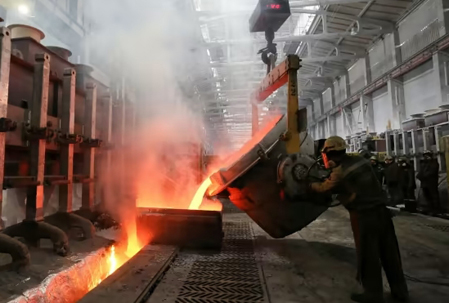
CPC (Calcined Petroleum Coke) is one of the most important raw materials for aluminum. In order to make it, high quality "green" crude petroleum coke is placed into rotary and shaft calciners. It's then heated to temperatures ranging between 1200 to 1350 degrees Celsius. The final product is low on moisture, has no hydrocarbons in it, and has an even bulk density.
CPC also is used in fertilizer and carbon products because it contains less sulfur. Due to its high HHV, CPC is becoming a popular fuel alternative for the generation of electricity.
Some emissions are produced during the calcination, such as SO2, PM10 and NOx. The exposure to these pollutants is often lower at locations further from well-controlled calciner facilities.
To minimize these emissions, a common calcination process is to use SO2 scrubbers to remove sulfur dioxide from the gaseous byproduct of the combustion of petroleum coke. In fact, a majority of the newer calciners are built with SO2 scrubbing technology as it is an integral part of meeting today's stringent air pollution standards.

As a result, many aluminum smelters are now requiring calcined coke from multiple sources to ensure an adequate supply of low-sulfur coke. To meet these specifications, the smelters blend coke produced by rotary and spiral calciners with different bulk density and porosity profiles. In many cases this blending is performed by the smelters themselves using an in-house designed blending system.
The growing demand for steel as well as the associated processes in metallurgy are driving the increase of calcined slag. This demand is largely driven by the developing economies of China, Argentina and Brazil.
As a byproduct of crude oil refining, calcined coke is a versatile and affordable fuel source for the industrial sector. Due to its low ash level, it is a good alternative for coal when used as a fuel in industrial boilers. Natural gas is a good alternative because of its higher calorific content. Burning it for energy can have environmental consequences due to its volatile sulfur content. These problems can be overcome by using SO2 or HCl scrubbers. Another option is to gasify the coke in a gasifier, which is increasingly being deployed by coal-fired power plants. This can improve the value of net coke by a significant amount and reduce volatile matter up to 90 percent. This is of particular importance in the United States because sulfur regulations have been tightened. The gasification process of petcoke, therefore, is quickly becoming a solution that can meet the emission requirements. The process is also able to be installed in existing coal-fired plants or gasifiers at refineries. On top of that, the ability to switch fuels offers cost savings for the operator.

Write a Message